Book review: Metric Pattern Cutting for Women's Wear by Winifred Alrich
So you’re thinking about buying a book about pattern cutting and you’ve come across Metric Pattern Cutting by Winifred Aldrich but you’re still unconvinced? It may be a small book (25cm x 20cm and 250pages) but it SERIOUSLY packs a punch!
Join me as I go through each part and explain why this book is an absolute staple for all pattern cutters…

When you’re learning to make patterns I always recommend starting with 2 key skills:
1. learning to draft a basic block set
2. Basic dart manipulation
The reason that Metric Pattern Cutting is so great is that it covers BOTH of these key skills and waaay more!
Not only does it show you how to draft a large range of blocks, it also gives you lots of examples of how to manipulate them into new patterns.
The thing that I would note about this book is that it has a fair amount of material geared towards uni students and those wanting to get into the industry. Depending on what you want to get out of this book that could be great but it could also be a little confusing for those who are wanting to learn to pattern cut as a hobby.
To the hobbyist, I would say be selective about which chapters you spend lots of time on.
With that in mind, lets take a little look at what we get in this book…
Introduction
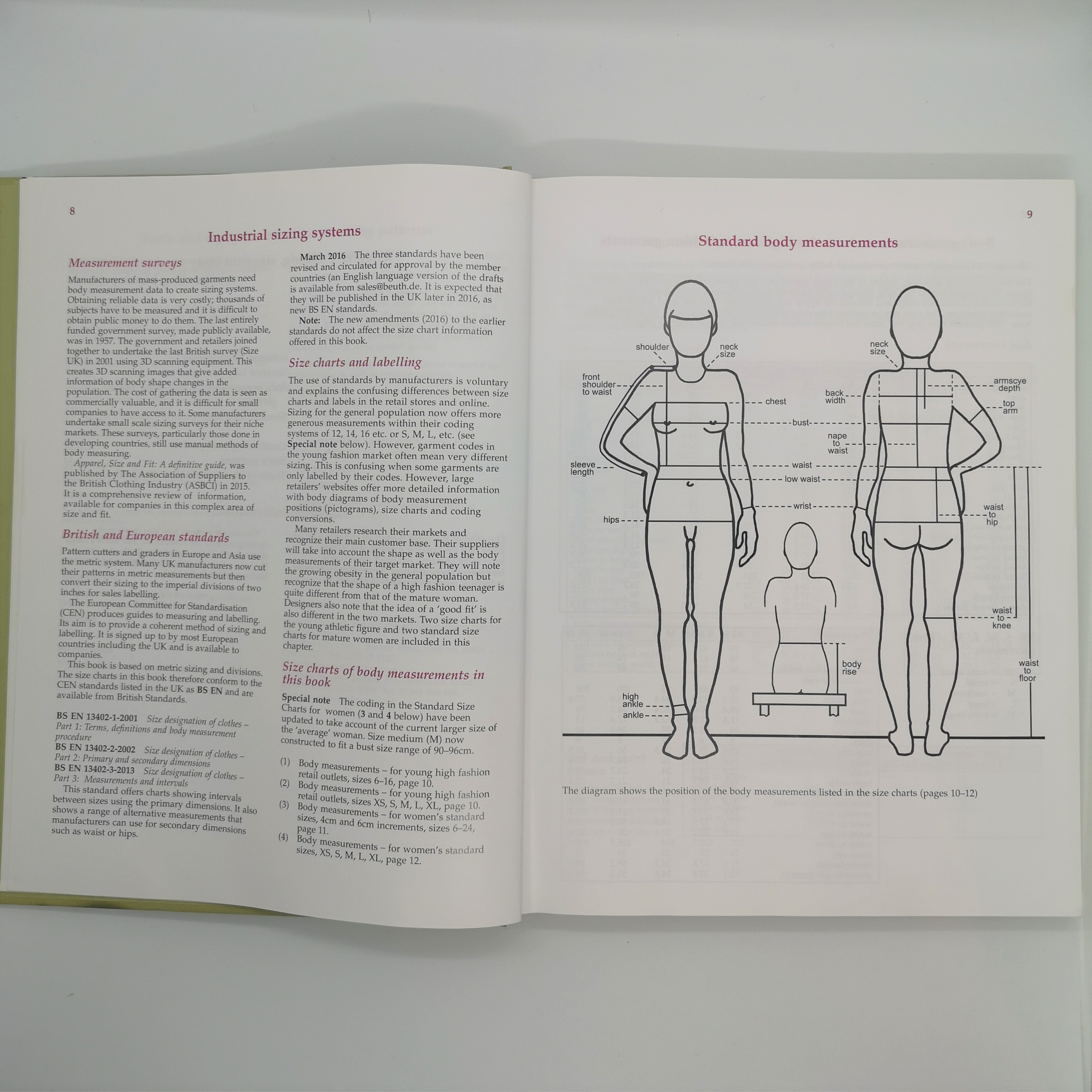
Winifred Aldrich kicks things off by introducing us to some pattern cutting tools and terminology (although there are no photos of the tools) we then move onto standard size charts which are useful to give you a guide of what standard sizing in the UK is but bear in mind that every company changes these measurements to fit their ideal customer so this isn’t an exact!
The super useful thing in this section is the body measurement diagram. This will help you understand where exactly you should be measuring!
This first section is also where we are introduced to some tools and pattern making rules about smoothing lines, adding seam allowances and labelling pieces. These pages are very useful if you’re new to pattern cutting.
Part One: Form Cutting
We then move into drafting blocks…
We start with the skirt block, which is the simplest, so is a good place to start!
However, the instructions are structured in a way that can be confusing if you’re new to pattern cutting.
You’re told the first step and then given a calculation for each line/point after that.
If you’re confused by this then try booking onto a block drafting class to help you understand it. I run a couple of different options here
After you’ve drafted the skirt block, Winifred shows us some some basic adaptions of the block.
Think straight skirts with flares and frills, panelled skirts, cowls and A-line skirts. We also touch on waistbands here.
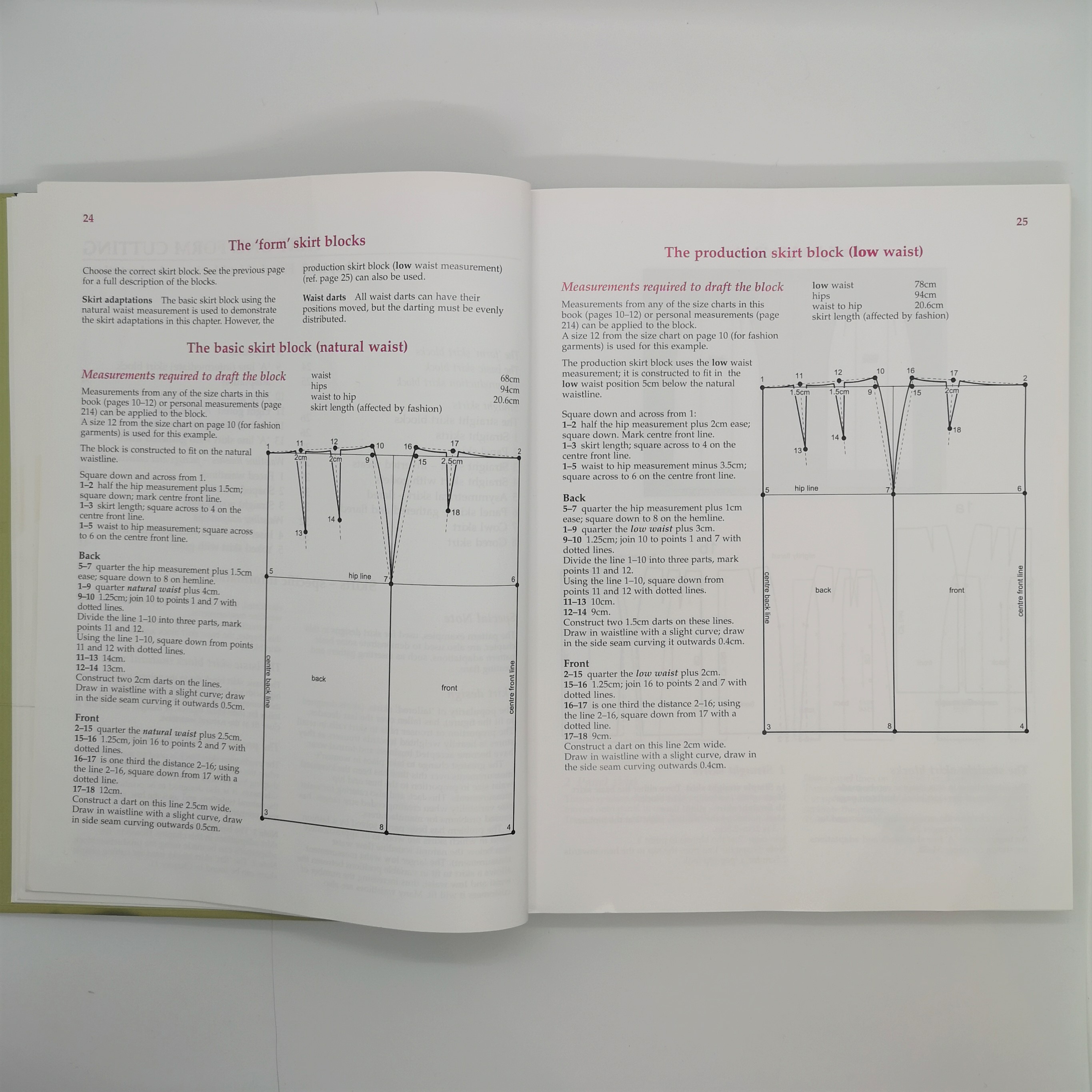
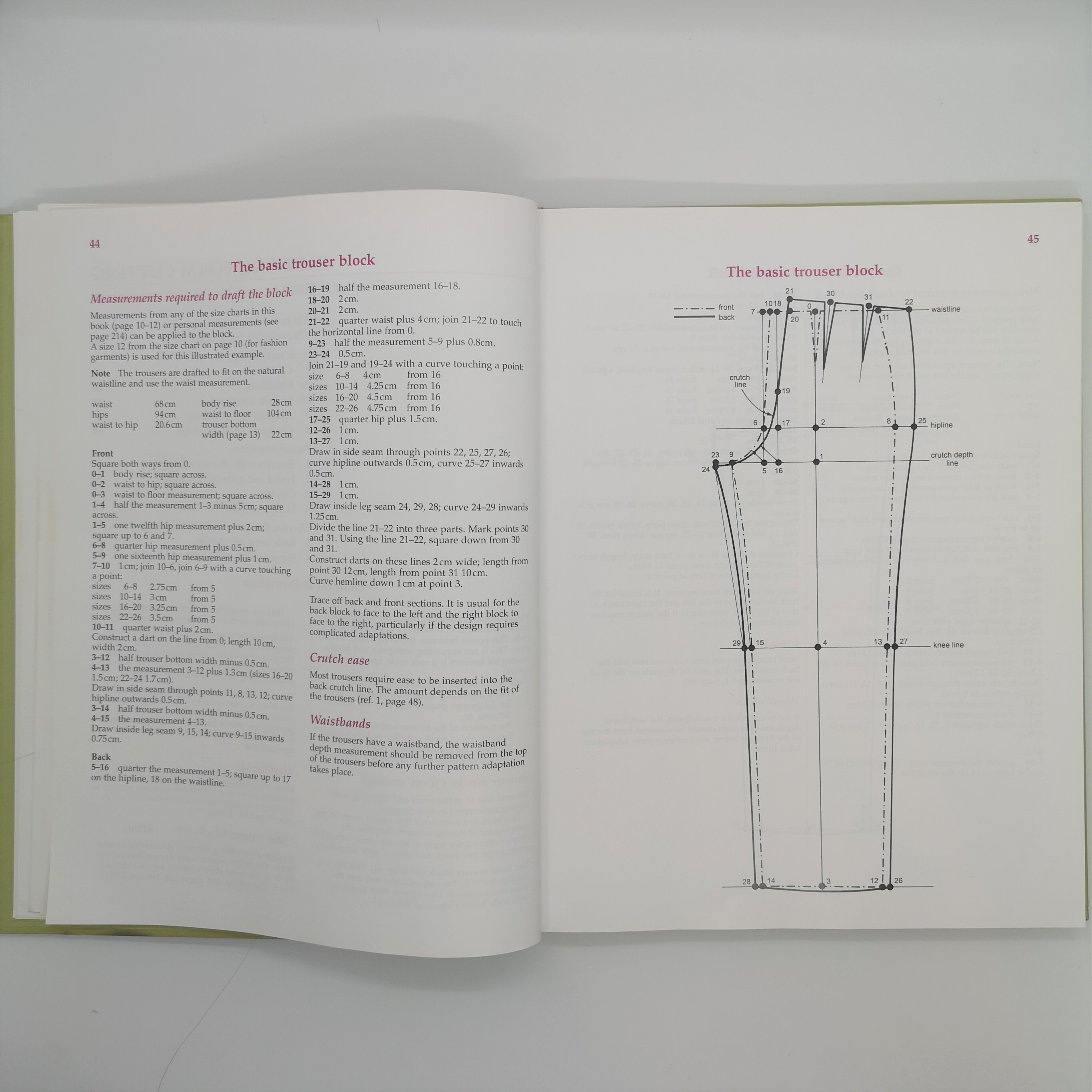
Trousers are next on the list and this section is much the same as the skirt section but with trousers as our focus!
After drafting the block Winifred shows us how to adapt the block into styles with flares, gathers, pleats and culottes.
She also shows us how to draft a jeans block which is pretty cool!
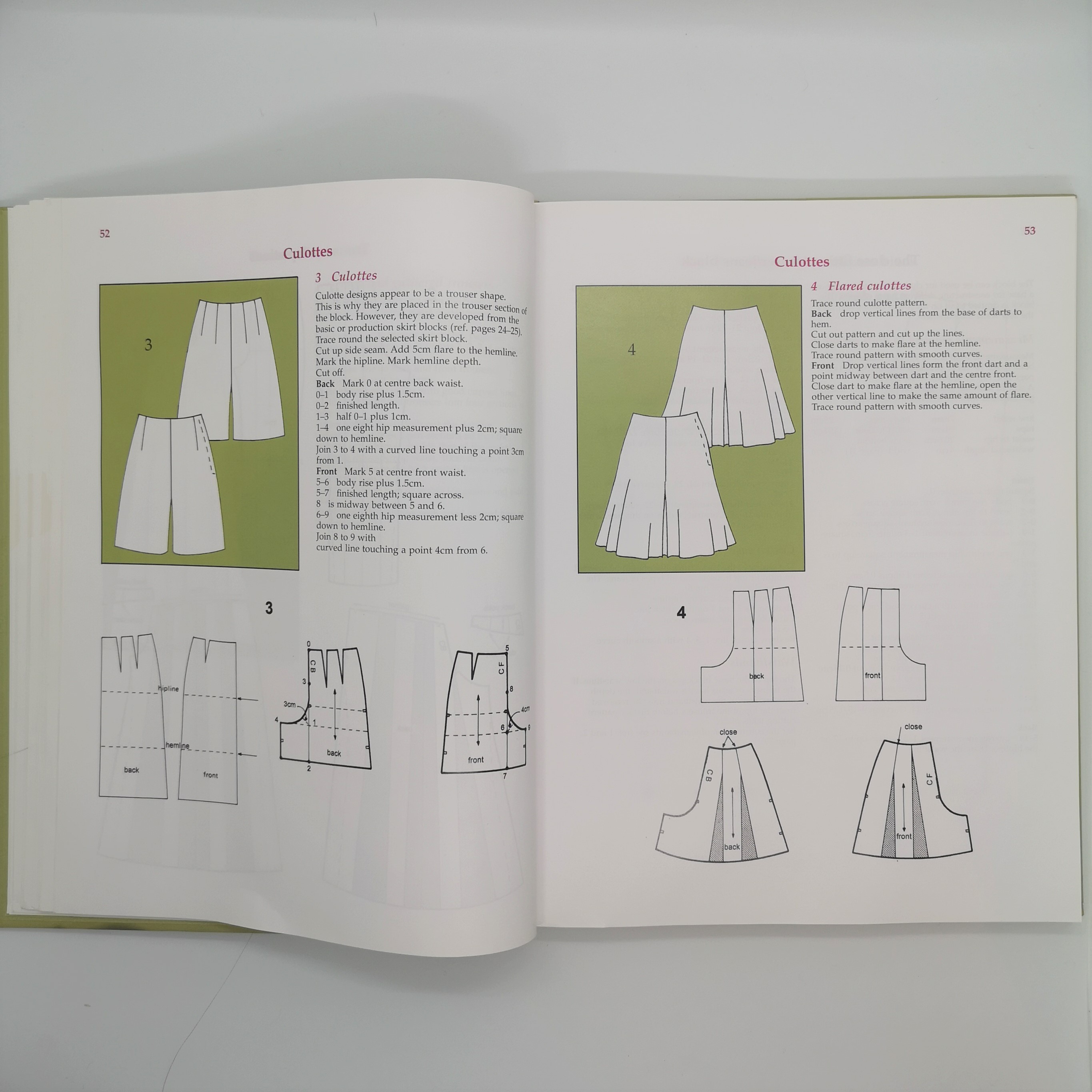
The next section is a bit different to the previous two. It’s made up of the instructions for drafting a range of blocks but doesn’t show us any examples of ways to adapt the blocks immediately. This instead comes afterwards in a different section.
I personally find this change in layout a bit jilting but it still does the job. My other criticism here is that the bodice block is drafted without any waist shaping, this is added as an option at the end of the section and isn’t done in the clearest of ways.
The full list of blocks in this section are:
- Close fitting bodice block
- Easy fitting bodice block
- Tailored jacket block
- Classic coat block
- One piece sleeve block
- Two piece sleeve block
- Kimono block
- Sleeveless block
- Lingerie and body fitting block
- Dress block
- How to add waist shaping to the bodice block

Part Two: Basic Pattern Cutting Process

The next section is where we get into dart manipulation and examples of adaptations. This is where this book comes to life!
We start with basic adaptations of the bust dart. Think rotation, moving into seams and converting the dart into tucks, gathers and pleats.
There are lots of sketches and examples ranging from simple to fairly complex.
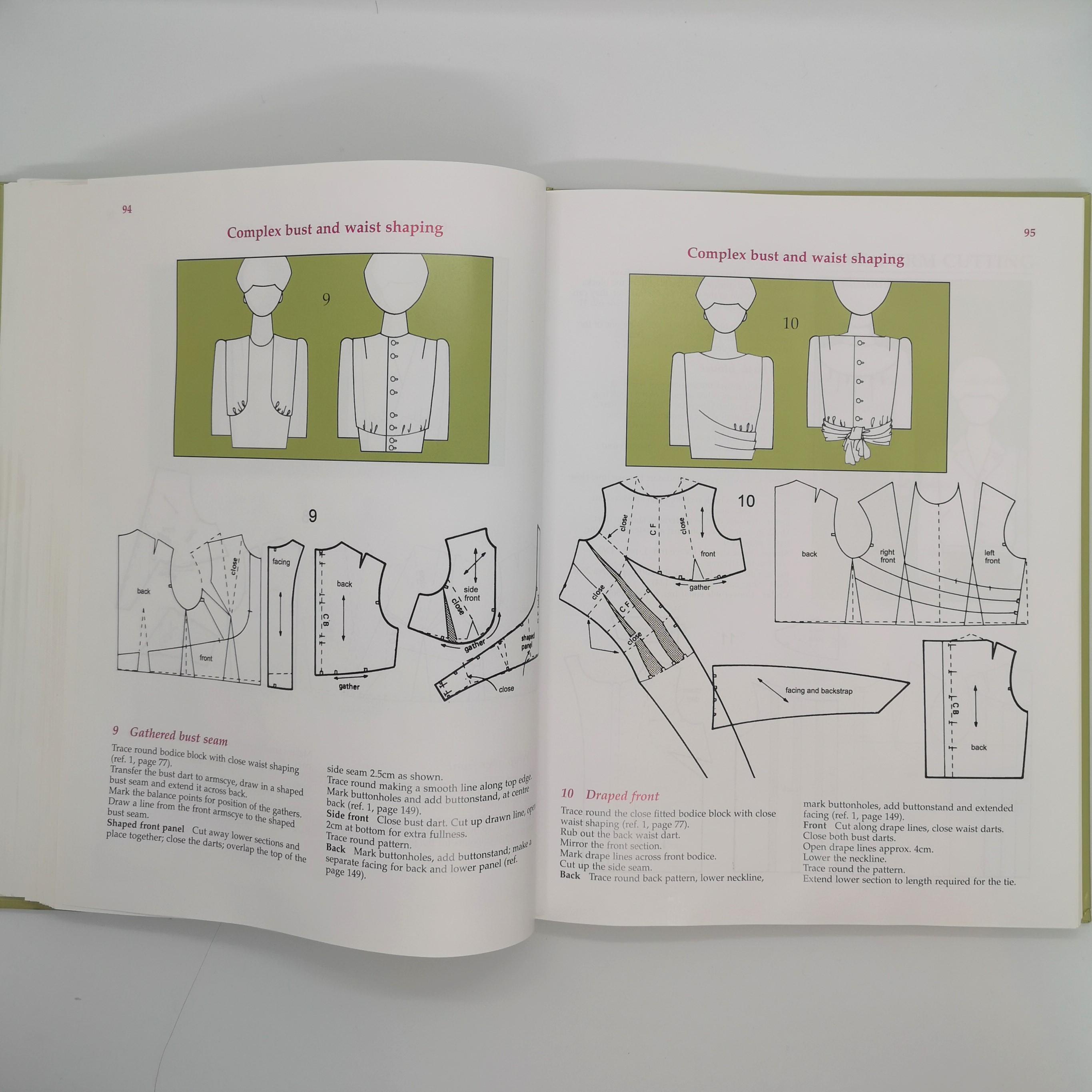
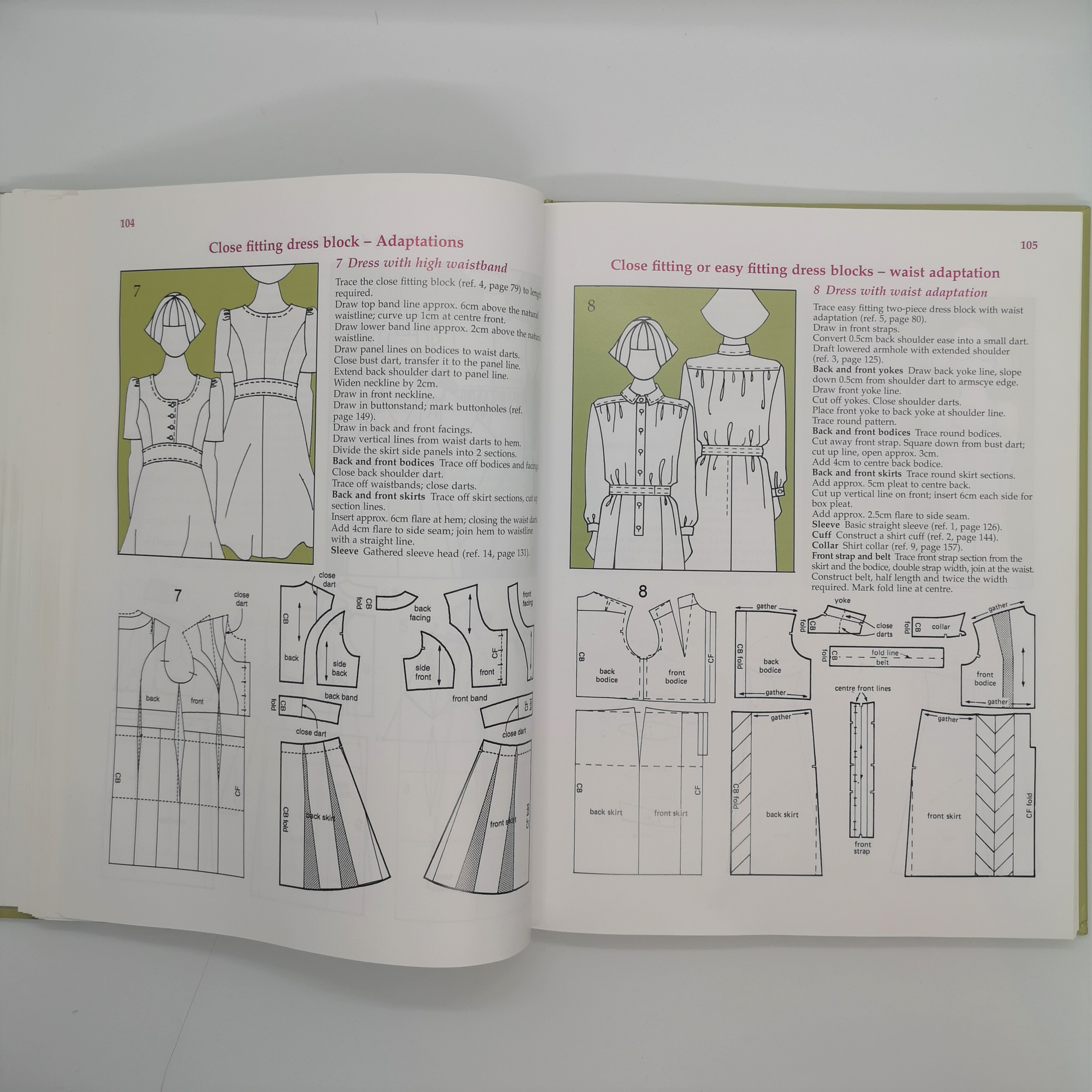
We then move onto the dress block adaptations…
These get nice and challenging quite quickly. We go from shift dresses to yokes, pleats, princess lines, wraps, plackets and cami’s.
From there we have a small section on tailoring.
I will say that if you’re looking detailed tailoring knowledge this is not the book for you. This section is packed full of useful info but it’s not very detailed. The best bit is that Winifred explains a bit about the jacket seam allowances and lining construction (FYI, different to dress!)
Winifred Aldrich does a separate book about tailoring which is really detailed and I would highly recommend it if you’re after more tailoring knowledge!
(You can find all the pattern cutting books that I recommend on my amazon store here)
The next section is pretty large and basically covers sleeves, collars and openings including:
Sleeves:
- Gathered sleeves
- Flared Sleeves
- Puff sleeves
- Dropped shoulders
- Raglan sleeves
- Dolman sleeves
- Kimono sleeves
- Batwing sleeves
- Sleeves with cuffs
- Sleeves with plackets
- SO MANY MORE!
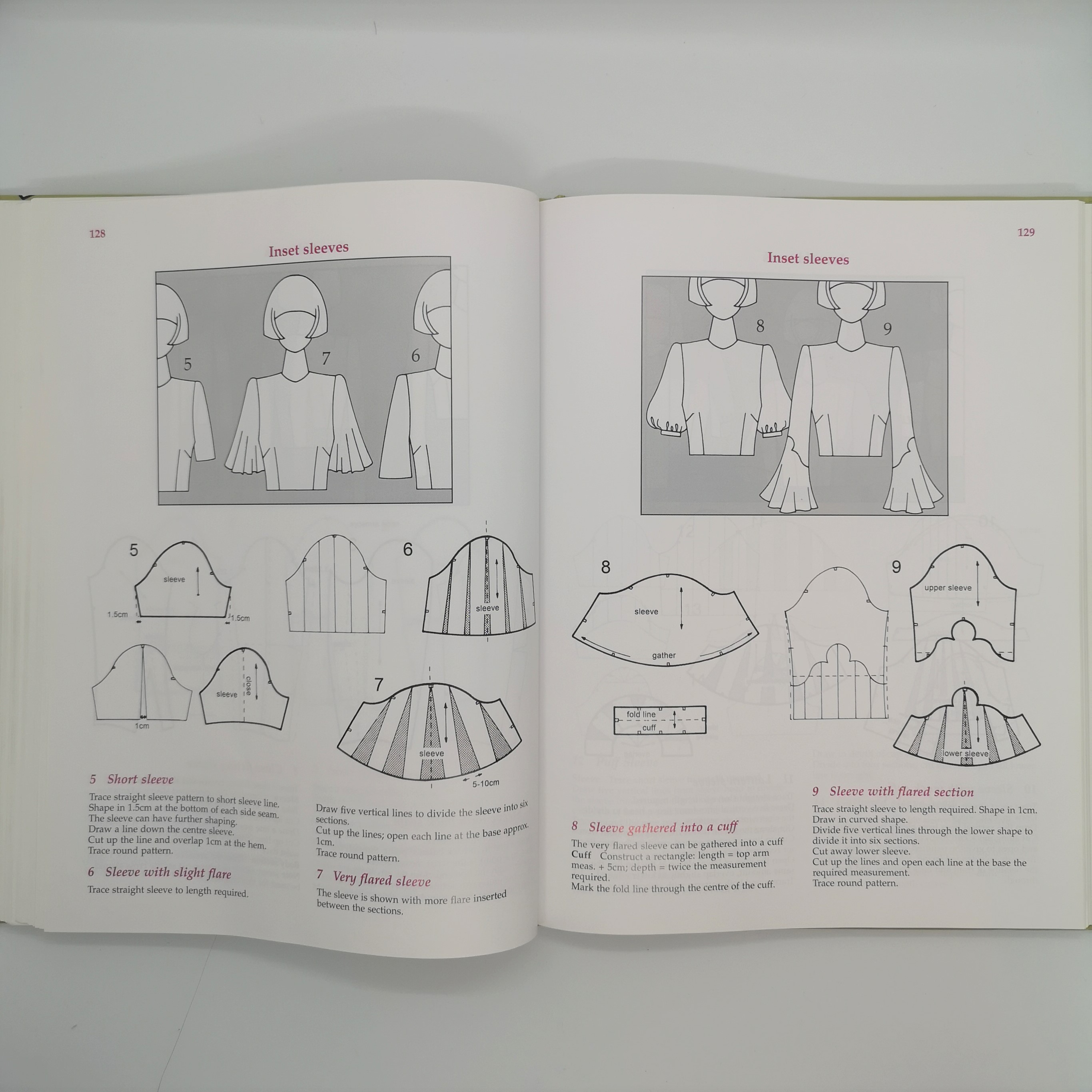
Collars & Openings:
- Button front
- Double breasted
- Fly front
- Peter pan collar
- Eton collar
- Polo collar
- Mandarin collar
- Shawl collar
- Shirt collar
- Hollywood neckline
- Classic rever and collar
- Frilled collar
- SO MANY MORE!

Part 3: Flat Cutting
Easy fitting garments
I don’t know about you guys but I found this title a bit confusing! In my head I keep reading flat pattern cutting which encompasses manual pattern making on paper but from what I can work out this section is basically for woven garments that don’t require darts or extra shaping. So they’re “flat” when folded up. So that’s baggy or loose styles as well as some styles in woven fabrics with some stretch to them. So think sportswear kind of vibes.
We’re shown how to draft some blocks and garments like:
1. Easy fitting trouser block
2. One piece trouser
3. Circular skirt
4. Trench coat
5. Swing jacket
6. Weatherwear
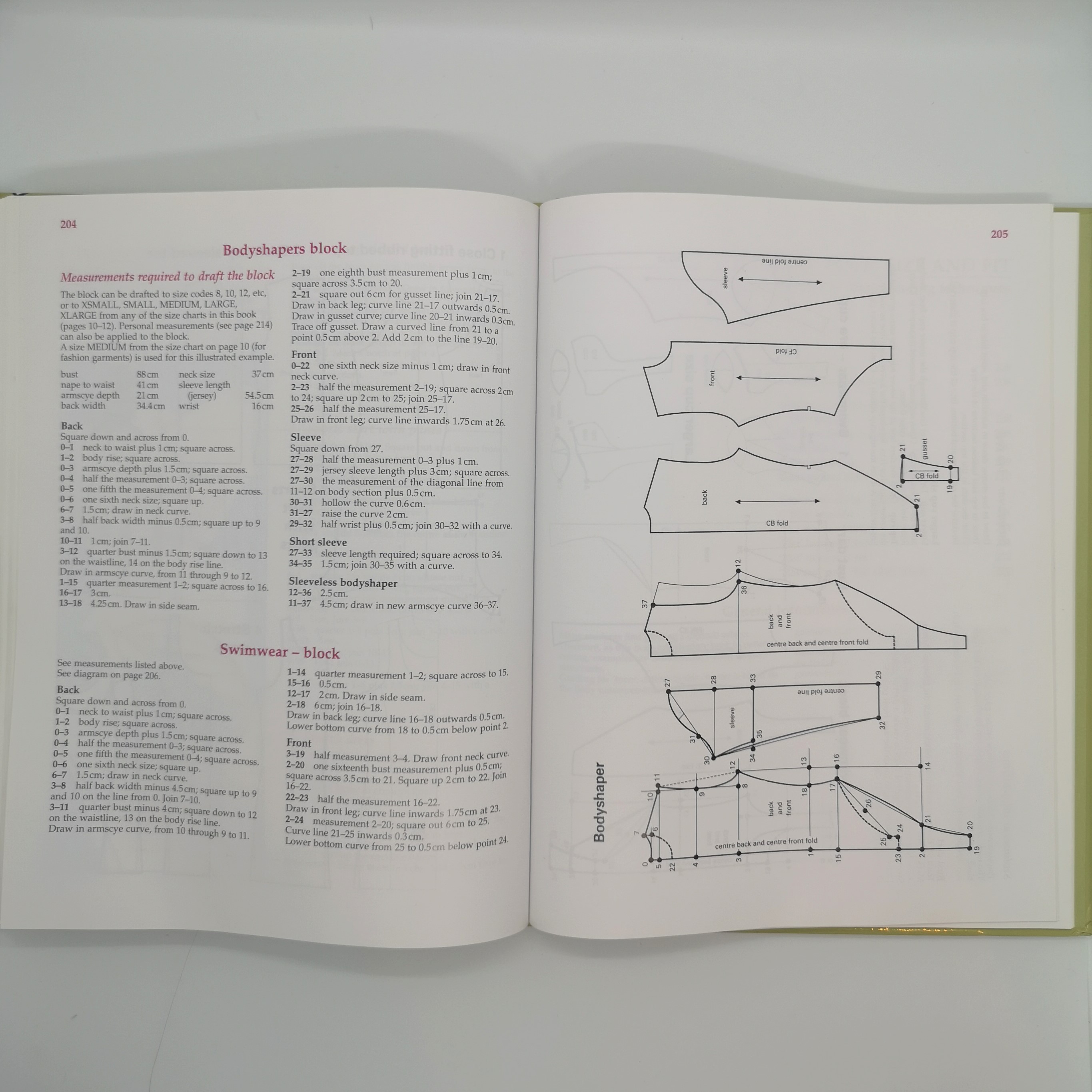
Knits and Jersey
Considering how small this section is (only 20 pages) it covers some serious ground!
As before we start with some blocks (mostly T-shirts) and move into adaptations like tracksuits, dresses and hoods.
We then move into leotard and swimwear blocks and adaptations including bra cups.
Part 4: Size and Fit
The last part of the book looks (extremely) briefly at grading. I would skip this section and buy an actual grading book if I were you.
But then it has this little gem of a section called “drafting for individual figures” which includes a small fit guide and shows you how to correct the pattern.
For beginners who don’t have the benefit of fitting experience yet this is great. It’s basic but it’s a good start!

Part Five: Computer Aided Design (CAD)

The last bit is CAD led design which is useful if you’re heading into the industry but if not then you don’t need this section!
It covers things like:
Digital pattern cutting
Layplans
Costings
Digital 3D modeling
Digital grading
It’s important to remember that this technology advances at an amazing rate so it might be out of date if you have an older book!
So there you have it, my little (or not so little) review of Metric Pattern Cutting by Winifred Aldrich.
There are things that I’m quite critical of in this book but mostly from a layout point of view. The actual content is great and it fits in my handbag which is AMAZING compared to other books of its level.
I think the fact that almost every pattern cutter that I know has a copy of this book speaks for itself! It’s a perfect for beginners as well as those who are new to the industry and I would highly recommend it to anyone who’s asking.
If you want to buy a copy of Metric Pattern Cutting by Winifred Aldrich you can find it here
See what’s happening over instagram…